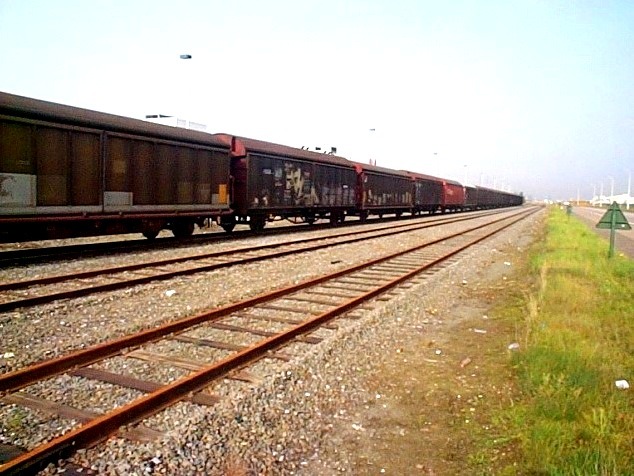The quantity of goods being transported by rail in Belgium continues to rise, although the number of journeys made by goods trains last year fell back by 3.5% to just over 13 million kilometres, according to a report by the Federation of Belgian Enterprise (FEB).
The drop in journeys was more than made up for by the increase in tonnage carried, from 49 million tonnes in 2015 to 63 million in 2018, an increase over three years of no less than 27.5%.
According to rail infrastructure company Infrabel, one reason could be the new rule, introduced a year ago, that make it obligatory to close two tracks instead of one when works are being carried out using heavy material.
Meanwhile the transport federation Febetra and the Belgian Rail Freight Forum have issued a joint call for measures to be taken to stimulate rail freight while compensating road transport operators for moving shipments from road to rail.
Rail freight has limited applications, the industry recognises: short distances are too costly, where they are even possible. However longer journeys could be made more affordable by offering some compensation to logistics operators for the extra cost – estimated at 40 euros one way. If that were introduced and achieved the desired results, the partners argue, it could mean the equivalent of 750,000 fewer truck journeys in a year.
“Via a transfer subsidy, the government could compensate road transporters for the transfer to and from the most efficient transport method,” said Paul Hegge of the Belgian Rail Freight Forum. “In that way we could take 750,000 truck-journeys out of the traffic, and avoid 1,000 hours a day lost in traffic jams.”
The joint proposal has the support of the FEB, the employers’ federation. “The cost of the transfer from one mode to another remains very high at present,” commented FEB mobility expert Eloïse de Villegas. “That means that a lorry is able to offer greater flexibility at a cost more attractive than the train. We need more flexibility between the different modes, and to achieve that, financial support is required.” The incentive for switching modes would also, she said, reduce the costs of transport and help attain environmental objectives.
Alan Hope
The Brussels Times

